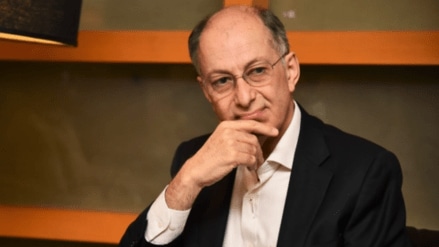A union budget can mean different things to different people. Some tend to dismiss it as just an annual ritual, others read in it signals from the exchequer on the attitude towards wealth, welfare, wants from states and on fiscal prudence. But to many, especially within the industry and in the media, it is time to gather what people would ideally hope to see and reasonably expect from the budget.
While there seems clarity on a broad wish list of policy interventions, what seems to worry corporate India is the readiness on the distance to be travelled and the depth and width of the measures to be taken.
Between the pre-polls mini-economic survey and the full Union budget in the next few weeks, the government received a record dividend from the Reserve Bank of India of over Rs 2 lakh crore on top of handsome payouts by public sector entities. How will these funds get utilised would depend on the government’s priority at the moment and therefore a powerful signal on what to expect in the months and years ahead. Ideally, many in the industry seem to hope these funds get deployed to pare government debt.
The other economic ailments and the possible antidotes sought seem to be around adding jobs that can meet the needs of the one million new adults joining the workforce each month. Will the budget come up with measures to incentivise labour-intensive manufacturing to spur job growth? Will there be continuity in government spending on public infrastructure? How focused will the budget be towards aiding skilling, education – especially to ensure better learning outcomes. On health, energy security, reduction in compliance burden for MSMEs and gender balancing in labour force.
Naushad Forbes, co-chairman, Forbes Marshall and former president of the Confederation of Indian Industry (CII) finds these as important questions that the budget should provide some answers to. He like many leaders in the industry seem to be anxiously awaiting what the budget would do on these. Naushad Forbes, who is also an author of a popular book on Indian economy – “The Struggle and the Promise: Restoring India’s Potential,” says he expects to see focus on job creation through schemes to incentivise industrial investment into labour-intensive manufacturing. A big facilitator in this would also be the implementation of the four labour codes that look at wages, industrial relations, occupational safety, working conditions.
Incentives to invest in labour-intensive manufacturing in say the east of India – Odisha, West Bengal, Bihar and extending well into Uttar Pradesh, he feels, could help spur job growth and also beat the competition from countries like Bangladesh.
His big expectation is also a continuity in the government spending on public infrastructure and a focus on macro-economic stability.
In the light of the one-time fund inflows like the dividend from the RBI, Naushad Forbes hopes it gets deployed to pay off a large chunk of the public debt given that interest payments still remain the largest component of the government’s total expenditure.
For a country that harbours hopes of becoming a factory to the world and an innovation hub, Naushad Forbes hopes the budget will see heightened focus on supporting research and therefore he hopes to see greater mention on the plans for National Research Foundation and more research and development (R&D) fund allocations.
Industry leaders like Infosys co-founder Kris Gopalakrishnan and Biocon founder Kiran Mazumdar-Shaw and others have often reminded that time was ticking and India had little choice but to step up investments into research and innovation. Kris Gopalakrishnan for instance, has maintained for long that India continues to invests just about 0.7 per cent of the Gross Domestic Product (GDP) on research and should be hoping it gets to around 3 per cent of the GDP. The government spends about 0.6 per cent of the GDP and this could rise to 1.5 per cent. Similarly, he says, the private sector investments must go up from 0.1 per cent to 1.5 per cent.
Naushad Forbes also adds a caution on the PLI (Production Linked Incentive) scheme. He is not in favour of blindly extending it across the board without clear data on the effectiveness and the ability of the first to stay and thrive even after the initial supports are withdrawn.
The two areas where he is hoping there will be increased emphasis though is not sure of the extent to which one could expect. One is related to the problem the government is aware of and deals with education. He hopes to see some elements getting translated into actual programmes. For instance, while much of it would involve working with the states to improve learning outcomes, he hopes some specific measures could be taken. For example, ensuring teaching at the right level and get every child in the second grade up to a certain minimum standard nationally. While, much of it would have to be done at the state level, at the national level, there could be ways to incentivise the states with funds against performance on the NEP (National Education Policy) goal.
The second “wish,” he says, is to see progress on the privatisation programme. Since, there was not much progress made on this front even when the ruling party had a solid majority in the parliament, it seems to fall within the realms of a “wish” at the moment. He feels progress on this is critical from the point of view of fiscal prudence and other considerations of management. Finally, Naushad Forbes hopes the budget will come up with a wider, national tourism initiative given the ripple effect it can have for the economy.
